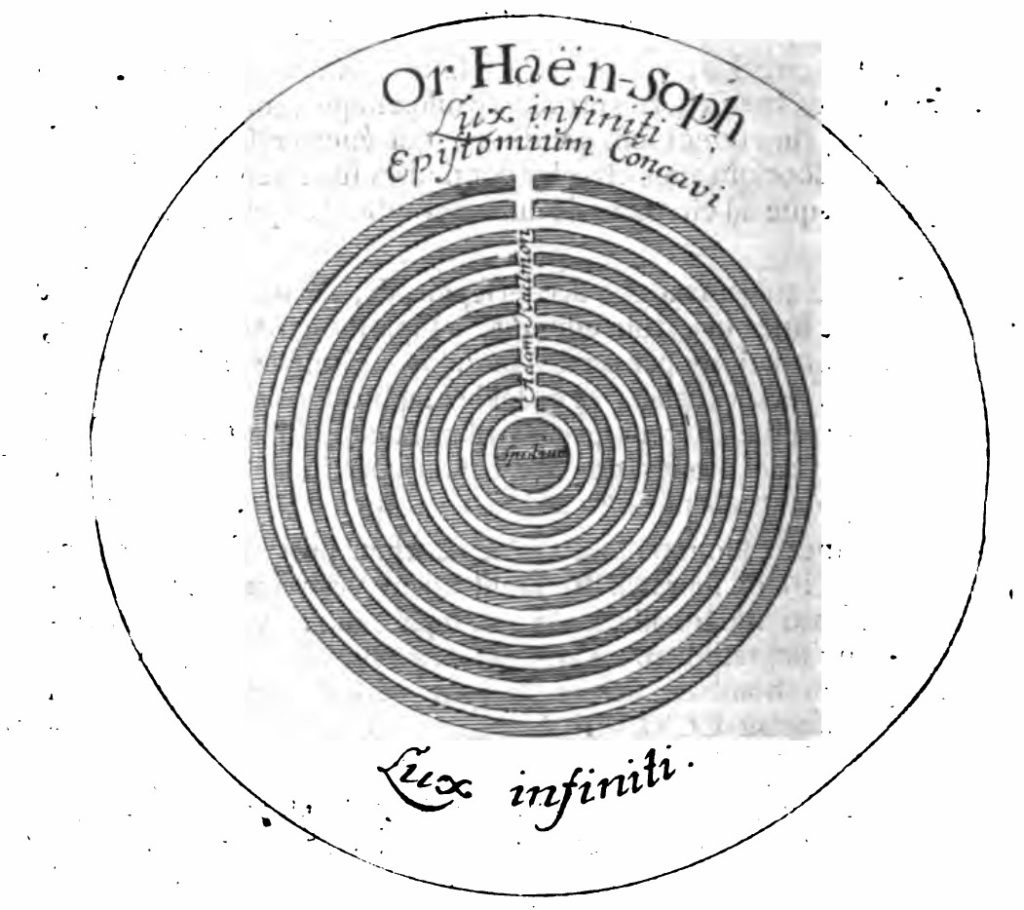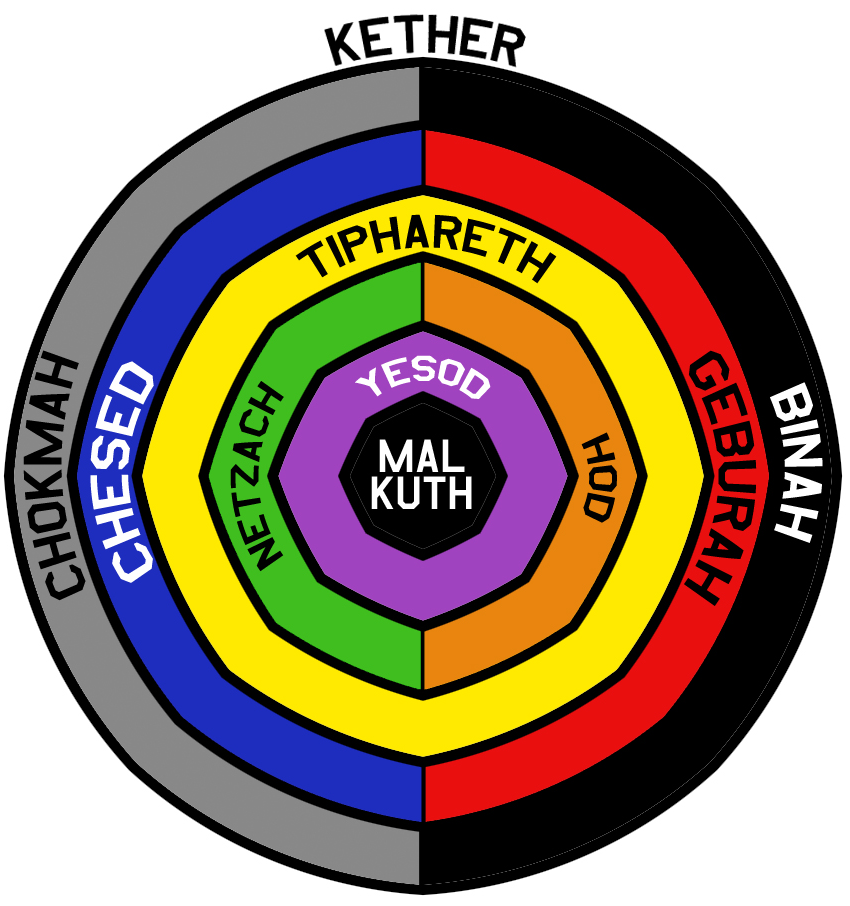Reflections on the Path in Eternity (Part 4)

I came to magick via an unsual path: through my interest in the German philosopher Georg Wilhelm Friedrich Hegel.
Hegel was not a magician. He was a late-18th/early-19th century philosopher in the idealist tradition (a branch of thought taking influence from Descartes, Berkeley, and Hume, but which is usually seen as having its origin with the Prussian philosopher Immanuel Kant).
But it was after I had been interested in Hegel for over a decade that I read Glenn Magee’s book, Hegel and the Hermetic Tradition. (You can read the introduction of the book here for free. It actually provides a pretty good orientation for how Hermetism differs from Gnostism and traditional Christianity.)
Magee persuaded me that Hegel’s philosophy of Absolute Idealism owed at least as much to Renaissance Hermetism (or Hermeticism as it’s sometimes called) as it did to rational thinkers such as Hume or Kant.
Magee understands Hermetism as a broad spiritual current which has a theological basis in the Corpus Hermeticum but which also includes currents such as Qabalah, alchemy, and magic.
Pretty much everything we consider to be the western magical tradition has its origins in Renaissance Hermetism, in particular the synthesis given to it by Cornelius Agrippa. (Really the only component missing from Agrippa’s synthesis is the tarot.)
For more on this I highly recommend Frances Yates’s Giordano Bruno and the Hermetic Tradition. Certain aspects of her work are considered controversial now. I recommend reading Copenhaver, Hanegraaff, and Kingsley alongside her.
One of the main impacts Magee’s book had on me when I read it is that—oddly enough—it legitimized occultism for me.
Hegel was a philosopher I had spent over a decade studying both in and outside of academia. I considered a lot of my philosophical intuitions to be “Hegelian”. The experience was a little bit like having lived in a house for several years and then one day discovering a secret sub-basement that wasn’t on any of the building plans.
I was becoming familiar with the Qabalah right around the time I read Magee’s book (largely due to the work of my friend Daniel Ingram who also legitimized magick for me), so I recognized the Tree of Life in its usual top-to-bottom arrangement. But I was surprised to find out that there had been alternative arrangements of the sephiroth over time, including one in which they were presented as concentric circles.
For instance, Johann Jakob Brucker gave them a circular arrangement in volume 2 of his influential Historia Critica Philosophiae (1742).

This diagram was Brucker’s attempt to illustrate a concept from the Lurianic tradition of Kabbalah, according to which each new act of creation or manifestation in the world is the result of a simultaneous contraction and expansion.
Isaac Luria and his followers envisioned the Ain Sof—the limitless infinity we previously identified with Nuit—as an infinite sphere in which a smaller sphere of empty space came into being through the tsimtsum, a primordial contraction or withdrawal of God.
It is into this empty space that God injects a ray of light which differentiates itself into the classical ten sephiroth. These were thought of as concentric circles of light filling the space within God created by the primordial contraction.
The first definite being that appears in the wake of the tsimtsum is Adam Kadmon (macroprosopus in the previous post). Adam Kadmon exists above the four worlds and mediates the light of Ain Sof into them.
Adam of the Bible—Adam Ha-Rishon—is an imperfect earthly embodiment of Adam Kadmon. While Adam Kadmon is spirit outside of space and time, Adam Ha-Rishon is spirit developing in nature, from the fall in the Garden of Eden and the loss of the immediate relationship to God, eventually to the recovery of that relationship in religion and mysticism (namely, Kabbalah).
(Ra-Hoor-Khuit is to Chaos as Adam Kadmon is to Adam Ha-Rishon.)
The implication of this concentric arrangement is that the material universe, individuals, and human history are not outside of the divine. Everything is in a certain sense “in” God. It’s just there in a corrupted or fallen state which has to be rectified over time.
This sense of us being in God, of directly participating in the divine all the time whether we know it or not, can be occulted by the traditional top-down arrangement of the sephiroth, where it looks as though Kether, Ain Sof, and Ain are somehow way above us mere earthlings.

“A View from Kether” by IAO131
A few years later when I got into Thelema, I was pleased to see someone else had taken an interest in a similar arrangement. IAO131 created a diagram similar to Brucker’s in which Kether surrounds and contains the other sephiroth. My own version was inspired by his insofar as the sephiroth on the lateral pillars are depicted as semicircles rather than complete spheres.
What these concentric representations of the Tree of Life share in common is the implication that the reality we find ourselves in is one formed from an overarching, primordial, divine unity which divides itself.
There is some evidence in Crowley’s writings to support this view of our reality being the result of a self-division of God.
To know itself, each such Star, or Soul, must eat of the Fruit of the Tree of Knowledge of Good and Evil, by accepting labour and pain as its portion, and death as its doom. That is, it must reveal its nature to itself by formulating that nature as duality. It must express itself by a series of symbolic gestures ostensibly external to it, just as a painter reveals one facet of his Delight-Diamond by covering a canvas with colours in such a way that the picture seems at first sight to represent something outside himself. It must, in fact, repeat for itself the original Magick of Nuith and Hadith which created it.
New Comment on AL I.29 (emphasis mine)
AL I.29—of which this passage is a commentary—reads, “For I am divided for love’s sake, for the chance of union.”
We find in this passage echoes of the Lurianic idea of the fall as a temporary but necessary tragedy resulting from the diremption of an original, absolute whole (in this case the “Star, or Soul” of the individual).
The way to overcome this division is to repeat for ourselves the “original Magick of Nuith and Hadith” which created the star.
In this passage, Crowley presents the path toward liberation in artistic terms. The task is to see the world and the events in it, not as alien to our desires, but rather as vehicles for the manifestation of them. We are to view matter as (akin to) artistic medium.
The world loses its alien, painful character when it is understood and willed. When we can see the world as our own artistic creation, we have achieved liberation.
This is an interpretation of the Thelemic path of liberation I explored in my talk on the Magical Power of Art.
It was with something like this in mind that I formulated my own version of the concentric Tree of Life. However, unlike Brucker or IAO131, I reversed the order of the sephiroth. Rather than having Kether on the outside and Malkuth in the center, Malkuth is on the outside and Kether is in the center.
As it turns out, my reasons for doing this are numerous and complex. But before explaining any of them in detail, it’s worth mentioning that old adage that “the map is not the territory.”
I don’t believe sephiroth literally exist, let alone whether they are really, in any kind of metaphysical sense, related to one another externally or internally, or whether Malkuth can really be said to be at the center or not. That’s not really the point of a diagram.
In this context, the purpose of the diagram is to serve as a heuristic. It’s an attempt to convey some complex ideas in a simplified format that makes them easier to comprehend.
There could well be certain aspects of Thelema that are better captured by having Kether on the outside and Malkuth in the center, just as there are aspects that are better captured by the usual hierarchical (top-down) arrangement.
All of that being said, there are a lot of spiritual, metaphysical, theological, and soteriological assumptions packed into this simple decision to put Kether at the center and Malkuth on the outside.
Some of them require a lot of explanation and carry with them a lot of implications, so rather than go into any of them in depth right now, I’ll just list them succinctly.
- Repeat = Defeat. Let’s present something familiar in an unfamiliar format to discover new things about it.
- The journey is inward, out outward. Crowley described the work of A∴A∴ (in contrast with the work of O.T.O.) as a process of going inward toward the three supernal sephiroth. Without taking it too literally, that implies a certain spatial relationship. And since all the sephiroth are to be found “in” Malkuth, this links Thelema with what might be termed a chthonic counter-current in Western mysticism.
- The Khabs is in the Khu, not the Khu in the Khabs. Again, this implies a particular spatial relationship. This also implies that divine reality is not some original whole we were cut off from and have to get back to. This core spiritual idea sharply differentiates Thelema from Hegelian Idealism, Gnosticism, or even from Kabbalah. In Thelema the individual really is primary and irreducible in a way that you just don’t find in those other traditions.
- Thelema is about 2, not about 1. It’s all about the relationship between Hadit and Nuit. In order for there to be a love relationship between Hadit and Nuit, Nuit must be other than Hadit. That doesn’t work if Hadit and Nuit are merely parts of a primordial, original whole.
- It’s all about the going. Experience matters. Change is real. It is powerful, it is divine, and it is meaningful. The O.T.O. teaching on the Path in Eternity is as central to Thelema as are the teachings of A∴A∴ on the Holy Guardian Angel and the Abyss.
- It’s magick, not just mysticism. Going implies change, change implies magick, magick implies the Will. Willing implies traditionally masculine qualities such as mastery, overcoming, and expansiveness in addition to the feminine characteristics of dissolution and surrender that are particular to mysticism. Both sides are necessary for a complete understanding of Thelema.
I don’t know yet if I’m going to write posts about all of these. If there are particular ones you definitely want to hear about, though, let me know in a comment.